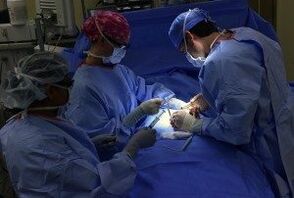
Varicose veins of the lower extremities are a chronic disease, which is expressed in a violation of the mechanism of blood flow in the veins. Because of this, the venous walls are under constant pressure, gradually thinning, nodular enlargements form in the veins.
As a result of blood stasis in the veins of the lower extremities, varicose veins develop. Manifested by swelling of the peripheral veins of the legs and their protrusion under the skin. The veins look sinusoidal and take on a bluish tinge. There is severe pain in the legs.
Varicose vein disease progresses without treatment, complicated by thrombophlebitis and trophic ulcers. Treatment of varicose veins should begin at the first symptoms in order to prevent the development of the disease.
First of all, for the treatment of varicose veins in the legs, doctors use conservative methods. If they do not bring results, then they resort to surgical treatment.
Physiotherapy treatment
In the way of treating varicose veins in the legs, an important place is given to physiotherapy methods. The main ones are as follows:
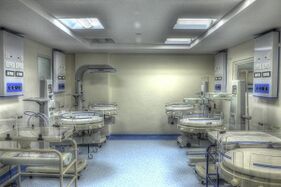
- Electrophoresis;
- Lymphatic drainage;
- Hyperbaric oxygenation;
- Galvanization;
- Magnetotherapy;
- Darsonvalization;
- Exposure to ultraviolet light;
- UHF and others.
The most popular procedure is darsonvalization. It is performed with a special apparatus that generates weak electrical discharges. Move it along the legs from the bottom up for 15 minutes for each limb. The course of treatment for varicose veins is about 20 sessions (depending on the degree of development of the disease). As a result, vascular tone returns to normal, lymph outflow and microcirculation in the leg improves.
Pulse magnetotherapy is performed using a magnetic field generator, which causes disturbed electrical currents in the tissues of the lower extremities, which have a therapeutic effect. As a result of this effect, the muscle fibers of the vascular walls in the leg are stimulated and toned. This improves blood circulation to the extremities, reduces swelling and reduces pain. Depending on the degree of varicose vein development, the session lasts from 10 to 20 minutes.
Pneumatic compression also helps restore the tone of veins and blood vessels through a type of massage. A device resembling a boot is placed on the patient's foot. It is under pressure from the gas supply. However, the method should be rejected for those patients with varicose veins who are prone to thrombosis.
Balneotherapy is an effective method for treating varicose veins in the legs, which consists of performing mineral water baths. The baths themselves are named local or general. Hydrotherapy is a local opposite bath. These methods are especially effective in the early stages of the disease. Manifestations of varicose veins to treat these methods at this stage is quite effective.
Oxygenation
In addition to local physiotherapy procedures, others are performed that affect the whole body as a whole. For example, bubble bath oxygen improves blood circulation, relieving the symptoms of varicose veins in the legs. Hyperbaric oxygenation is beneficial. During the session, the patient inhales pure oxygen at a pressure of more than one and a half atmospheres.
Ozone therapy is related to this method. Ozone absorption activates many processes in the patient's body: microcirculation is improved, metabolism is normalized and regeneration is accelerated. In therapeutic doses, ozone also prevents blood clots, slightly dilutes the blood. The course of treatment of varicose veins with ozone is 5 - 10 procedures with an interval of 2 days between them.
Physiotherapy is especially effective in the early and middle stages of the disease. Physiotherapeutic procedures should be prescribed by a phlebologist.
Drug treatment
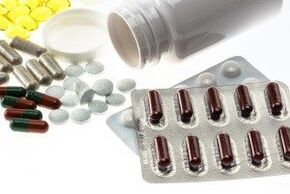
Treatment on how to overcome varicose veins in the legs is of secondary importance. They are the key to successful treatment and high efficiency of the main method. Medications are prescribed during physiotherapy and other methods of conservative treatment, and after surgery.
There are many medicines for treating varicose veins. They can be used in combination or separately. A phlebologist should appoint a suitable one. All medicines can be divided into several groups:
- Phlebotonics;
- Anticoagulants;
- Degenerative;
- Disputes;
- Antioxidants
- Fibrinolytics.
Phlebotonics allow you to increase the tone of the walls of blood vessels and veins, and are therefore effective in treating varicose veins in the legs. The walls become stronger and denser. The effect of treatment with other methods is fixed. Blood circulation in the legs improves, lymphatic output improves. They are prescribed for preparation for surgery and as rehabilitation after it, relieving inflammation in the vein with varicose veins.
Anticoagulants are drugs that work to reduce the ability of the blood to clot. This prevents the formation of blood clots, which is of great importance for varicose veins of the leg. They can be taken as pills or injections. Taking them without consulting a doctor is dangerous because they have a side effect - bleeding, which is difficult to stop.
Decongestants can be taken orally as pills or externally as gels and ointments. In the form of tablets, diuretics are mainly used. Such drugs significantly reduce leg pain with varicose veins as well as additional pressure on the vein walls. Their use improves blood circulation.
Disaggregants - medicines that also affect blood clotting, however, do not belong to anticoagulants. They stop the coagulation process only in the earliest stages, and therefore do not belong to anticoagulants. They do not have a significant effect on overall coagulation indicators. When used as adjunctive therapy for varicose veins, they have the same effect as anticoagulants.
Antioxidants act through detoxification. As a result of the restoration of chemical bonds in the cells, the tone of the walls of blood vessels and veins is strengthened. As a result, cure for varicose veins of the leg is much faster.
Fibrinolytics prevent blood clotting. This is due to the destruction of fibrin, which is part of the blood clot. The use of a drug from this group allows blood plasminogen (an inactive protein) to take the form of plasmin, which causes the destruction of a blood clot. However, taking this medicine does not prevent further thrombosis with varicose veins.
The pharmaceutical company has developed a whole series of medicines that combine the properties of several described groups. Such drugs should be prescribed by a physician and taken strictly under his supervision. This is due to the fact that they have quite a few side effects.
The use of medications for varicose veins in the legs may not be the only measure. They are prescribed in conjunction with other treatments.
Laser therapy
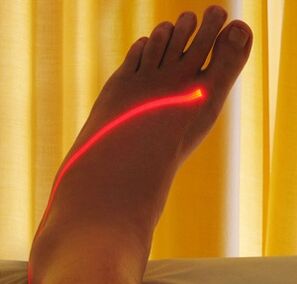
This is an effective way to treat varicose veins of the legs. The principle of operation of the laser in this disease lies in its effect on hemoglobin. Hemoglobin absorbs laser light and heat is generated in the blood. As a result, the damaged vessel is "sealed". The laser also indirectly affects the tone of the walls of blood vessels and veins because it causes a spasm of these walls. The advantage of such an impact is its accuracy. It only affects certain tissues, without affecting those around them in any way.
After exposure to the laser, the movement of blood through the treated area will stop. The blood supply to this part of the limb will be produced by the deeper veins. In the "non-functional" part of the vessel, connective tissue is formed, which will dissipate over time.
The advantage of this method to get rid of varicose veins is its minimal trauma. Patients do not experience discomfort or pain after the intervention. In addition, there are other advantages:
- The method does not require skin incisions, unlike surgery. Thus, no wound remains behind him. There is also no bruising after the procedure;
- The procedure is short and is performed under local anesthesia. Given this, it is as safe as possible for health, in contrast to the surgical intervention, which is performed under general anesthesia;
- From a financial point of view, laser treatment of varicose veins is similar to surgery. Although it seems more expensive, however, it should be borne in mind that after it the patient does not need to go through a period of rehabilitation and stay on medical leave for a long time, or spend money on recovery.
Many diseases can be cured with laser. It has become a good alternative to many types of procedures. Minimal trauma, painless and effective - all this makes laser treatment the preferred in many situations.
Sclerotherapy
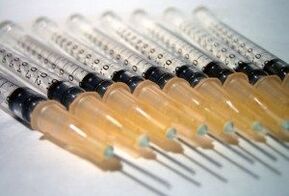
Sclerotherapy is a popular method for treating varicose veins in the legs, which is sometimes called physiotherapy. Basically, special drugs are injected into the veins. The method is non-traumatic and effective, and is therefore popular. This method is sometimes comparable in its effectiveness to a laser and even surgical intervention. After such a procedure, the walls of the vessel are glued and strengthened, due to which it is possible to defeat the varicose veins of the legs. And the medicine is absorbed into the body.
The main advantage of the method to get rid of the disease is the absence of scars and bruises after the procedure. It is also important that it is not too painful and that it can be performed under local anesthesia. After the procedure, the integrity of the circulatory system is not compromised because the veins are not removed. Such an intervention can be an ideal option both when it is dangerous to use surgical methods - with thrombophlebitis, periflebitis, as well as in the treatment of relapses of the disease, when the veins are fragile and twisted.
The method has a number of contraindications. First of all, this is pregnancy and lactation. Serious diseases of the cardiovascular system, diabetes mellitus, chronic liver and kidney disease, allergies - all this will also become a contraindication to the use of sclerotherapy, it is better to think about how to otherwise treat varicose veins of the legs.
If the doctor prescribes sclerotherapy, then he should be informed of possible contraindications. When a patient has chronic diseases of any nature, then the possibility of using sclerotherapy remains controversial.
Surgery

Surgery is a traumatic and painful way to effectively treat severe varicose veins of the legs. However, only its efficiency reaches 100%. In addition, it sometimes requires much less time than any other. Of the minuses, you can name wounds and large wounds, a long period of rehabilitation. There are several types of surgical interventions:
- Stripping involves removing a portion of a vein with a thin probe. It is injected at the beginning of the vein and withdrawn at the end. In this case, the area fixed to the probe turns outward, as it were, and it becomes easy to remove it;
- Phlebectomy is a traditional surgical method for treating varicose veins, which involves cutting tissue with a scalpel. It is performed both when minimally invasive intervention is impossible, for example, when significant areas are affected or there is severe inflammation, as well as for other indications;
- Microflebectomy is considered a minimally invasive procedure. Helps treat varicose veins effectively. By type of execution, it is similar to the previous method, only the incisions in the skin become very small. Thus, it is less traumatic. It can be performed when the lesion is not so severe and it is not necessary to remove a large part of the vein.
This method has a number of indications and contraindications. So pregnant women and those who have recently given birth can not be intervened. After giving birth, you should wait at least a month and a half. In the early stages of varicose veins, you should also not use this method.
Surgical intervention is not a guarantee of the absence of recurrence of varicose veins in the leg. You need to take care of your health.
Many methods of treating varicose veins in the legs allow the doctor to choose the best one for each specific case. However, the more the disease starts, the more radical it will have to be resolved. Therefore, you should not delay contacting a doctor if you observe the first symptoms of varicose veins in your leg.




































